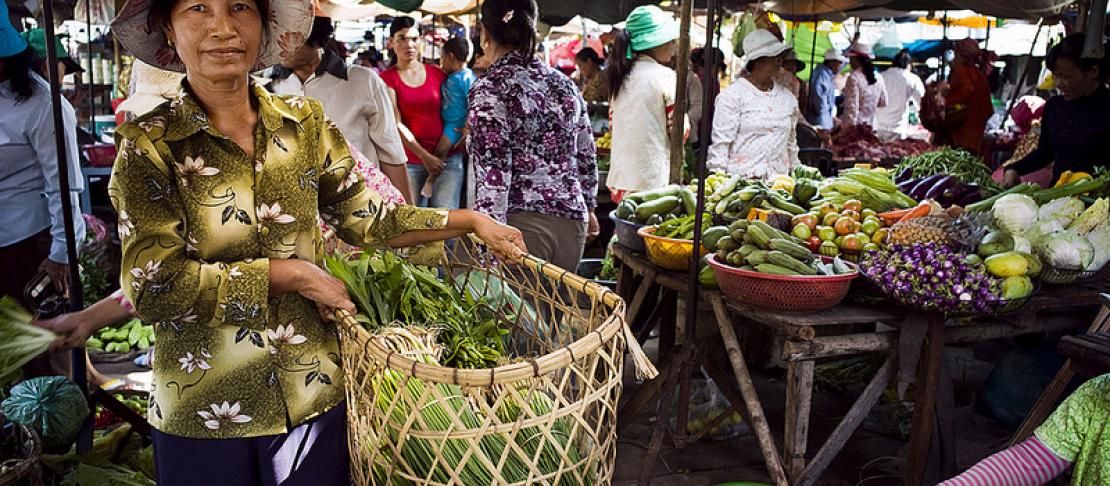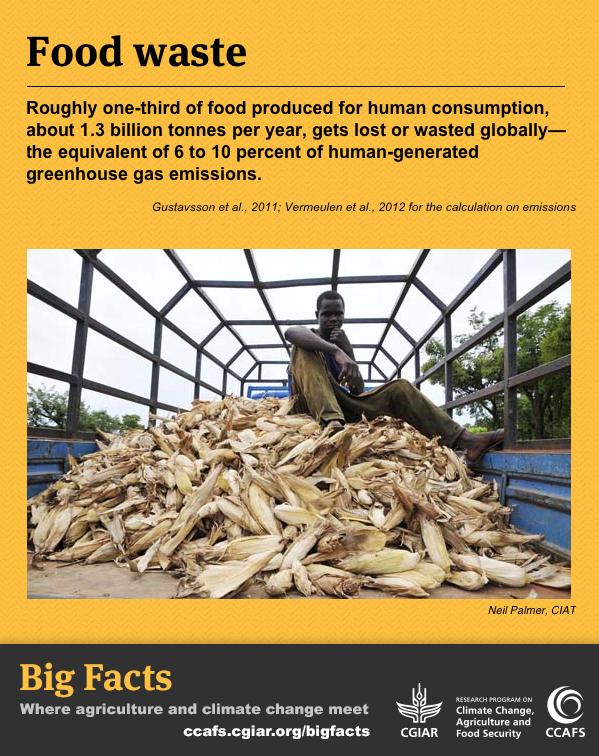Why markets need to be part of a climate-smart solution

Be honest. When was the last time you looked in your fridge and decided that the contents would be better off in the bin? Well according to the Food and Agricultural Organization, it was probably not that long ago. The statistics would put you in pretty good company: roughly one third of the world’s food produced for human consumption - approximately 1.3 billion tonnes - gets lost or wasted every year.
Statistics suggest that roughly the same amount of food is wasted in developed and developing countries. But in the latter, the loss occurs at post-harvest and processing levels, whereas in industrialised countries it happens at retail and consumer level.
That means that while people in developed countries are more likely to put their food in the bin once they’ve bought it, people in developing countries can’t get it to market to sell it in the first place.
Building more efficient farming systems
Whichever way you look at it, food loss and waste fuel vagrant squandering of precious land and water resources, and create a needless supply of greenhouse gas emissions. Yet at the same time, demand for more food is on the rise, driven by a growing, and wealthier population.
“As people get richer, they want to eat more protein,” said the World Fish Center’s Doug Beare. “More pork, more beef, more fish – and China is driving demand for fish worldwide,” he said.
While ramping up global food supply may be necessary, transforming our current global food supply and production systems into more efficient, multi-functional value chains will be crucial to achieving sustainability.
So as climate change experts and researchers gather to hammer out a site-specific road map for climate-smart villages, or “learning laboratories” in the region, it’s no wonder that getting food to and from markets in a more sustainable fashion was among the top criteria deliberated.
The climate-smart villages will constitute around six locations where researchers, government agencies, private sector, farmer groups and civil society organisations will collectively trial integrated solutions to climate change as part of the CGIAR Research Program on Climate Change, Agriculture and Food Security (CCAFS).
Climate-smart villages
One question facing researchers is where to situate the villages. On the one hand they can't be situated in remote areas where no one can get to them. And on the other hand, putting them a stone’s throw away from an urban hub will make any lessons learned non-applicable, and not easily “scaled up” to the millions of people living in rural poverty.
Learn more: What are Climate-smart villages?
Taking into account huge diversity in agro-ecological zones throughout the region will be one challenge. Senior scientist at the World Agroforestry Centre Jianchu Xu, notes in addition that climate change impacts everybody – rural and urban, farmers and non-farmers. “It’s about climate smart development, institutional innovation and knowledge,” – that includes a holistic view of development in its broadest sense.
Dindo Campilan, a social scientist from the International Potato Centre (CIP), notes: “Food security is not just about production – it’s also about how consumers drive the market. What are the market and consumption drivers that would stimulate and sustain climate-smart villages?”
Road-map: the process
Consideration of macro-economic factors that might aggravate climate variability will have to be taken into consideration - going beyond increasing production and post-harvest loss to changing the behavior of people.
One thing is certain: wherever the villages go, researchers will need to execute a well-coordinated and integrated action plan which successfully responds to the challenges posed by climate for the people who live in them. That will be phase two of the development.
In the meantime, the selection process must take into account accessibility to markets and other infrastructure, while harnessing the opportunity to transfer new lessons from the every-day challenges to the millions of rural poor exposed to very real advance of climate change challenges in Southeast Asia.
All this, tempered within in the context of the hugely diverse and complex agro-ecological and eco-systems, under-lying gender, ethnic minority and political factors that characterize the region.
For more information about the Bangkok conference mapping out the future of CCAFS most recent region, read: Climate-smart road map for global rice powerhouse
A decision on where to establish the Southeast Asian Climate-smart villages will be made next year.



